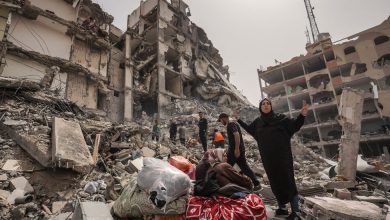Vermont, Dressed in Snow

Vermont is famous for its verdant summer landscapes and postcard-worthy fall colors. But it’s the Green Mountain State’s winter landscape that truly sparks my photographic eye.
New snow transforms the dull shades of stick season into a fresh palette of photographic possibility. Like a life-size Etch A Sketch, the landscape is continually transformed by recurring snowfall.
Fresh snow allows lone trees, hay bales and empty swimming pools to cast more accentuated shadows. It isolates and elevates mundane objects and presents them as if on display.

The town of Middlebury, Vermont.
Seen from the vantage of a drone in the sky, blue shadows reveal themselves more readily. The snow acts as a vast diffuser, softening the light and reducing harsh shadows.
Snow also helps clarify and distill the essence of Vermont: a red barn, or the curve of a road through a snow-covered forest. In winter, the state becomes more luminous, more elemental, more abstract.
As a photographer based in Vermont for the past 20 years, I am constantly on the lookout for places that might make for compelling aerial pictures. Sometimes I’ll stop and scout for locations when I have extra time; other times I’ll return to a promising spot when the weather is more favorable.
On many occasions, I’ve launched my drone looking for one thing, only to discover something else entirely — like a bunk of snowy farm tires spotted while flying back from the Lemon Fair River in Cornwall late one winter day.
Taking pictures with a drone in winter requires a combination of planning and luck. Because of the cold and the need to operate the remote control without gloves, I have to be quick — or risk being frostbitten.
Some days I launch my drone from my home in Middlebury to capture a crystal-clear sunrise over the town, knowing that if I drive elsewhere to launch, the light will have changed.
From Middlebury, Addison County’s seat, my excursions lead outward in all directions, depending on where an assignment or an intuition takes me. I might drive over winding Route 125 to the yellow buildings of Middlebury College’s Bread Loaf campus, near where Robert Frost wrote many of his poems. On other days, I’ll drive farther east to the tiny village of Granville, where an iconic town office building stands sentinel along Route 100.
I love an excuse to drive over the Appalachian Gap in Buels Gore to photograph the hairpin turns on Route 17. Add snow, and the transformation is almost magical, creating a wonderland of frosty textures.
At Rock of Ages Granite Quarry in Graniteville, my drone peers into a snowy pit, hinting at the hard work and long history of Vermont’s stone industry. The quiet of the snow contrasts with the louder days of warm weather when the quarry is most active.
And yet I often stay close to home. After sunset, during the brief window of twilight, I launch my drone into the cold air and search for new perspectives on the snowy village below, taking long-exposure photos, trying to keep buildings focused and car lights blurred.
Soon, I know, the snow will melt, the maple sap will run and spring will gradually emerge. Though I love photographing during the warmer months, the Vermont winter remains my most inspiring muse.
Caleb Kenna is a photographer and F.A.A.-certified drone pilot based in Middlebury, Vt. You can follow his work on Instagram and Facebook.
Follow New York Times Travel on Instagram, Twitter and Facebook. And sign up for our weekly Travel Dispatch newsletter to receive expert tips on traveling smarter and inspiration for your next vacation. Dreaming up a future getaway or just armchair traveling? Check out our 52 Places list for 2022.




